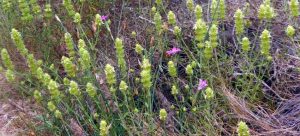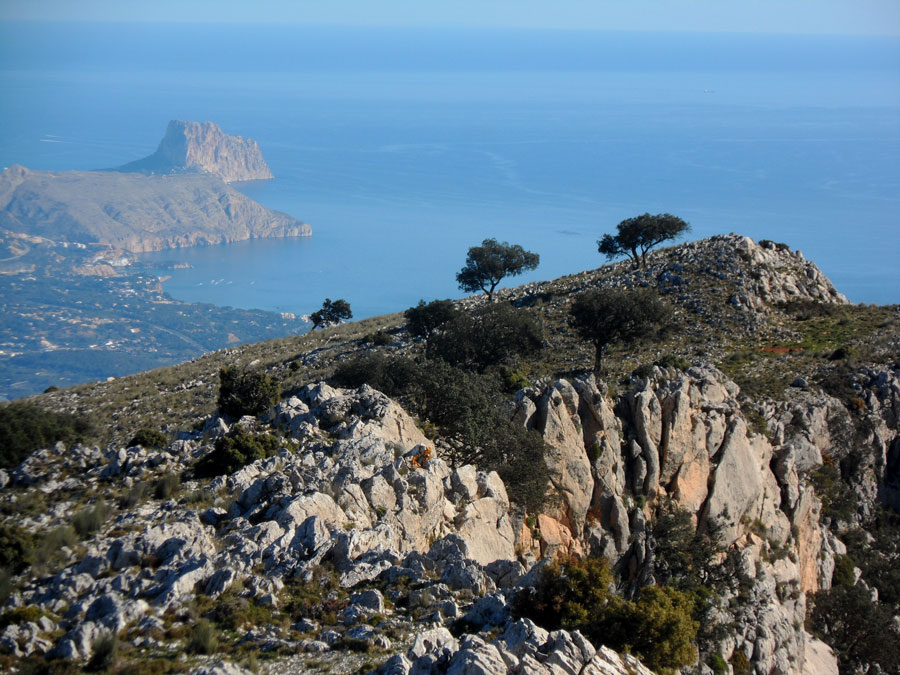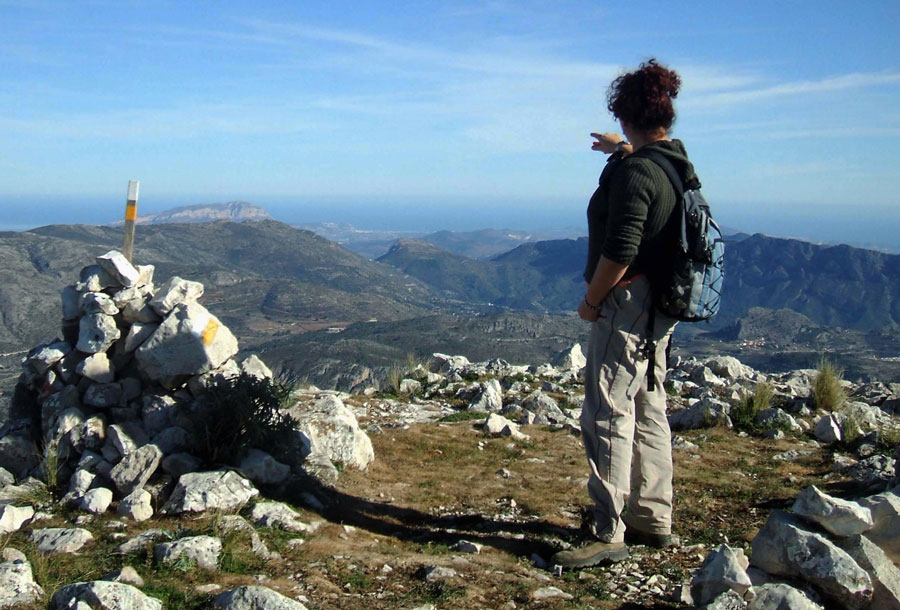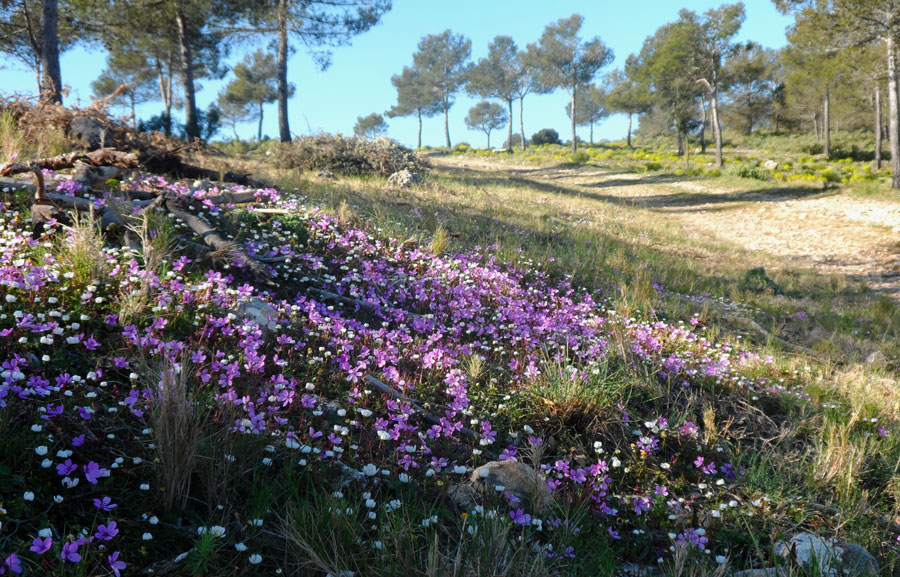
With so many destinations for walking holidays in Spain that it is difficult to know where to start looking. In this article we consider walking holidays on the Costa Blanca and look at what the area has to offer.
Las Marinas, lies inland from better-known tourist destinations on the Costa Blanca such as Denia and Calpe. It includes a series of mountains that rise to 1500 metres above sea level and interspersed with neatly cultivated valleys dotted with whitewashed villages that date back to the Moorish occupation of Spain. In fact, the Costa Blanca, or the White Coast, owes its name to the whitewashed villages so typical of the area before mass tourism changed the coastline forever. It includes the northernmost Comarcas, or districts, of Alicante Province, the southernmost of three that make up the Valencian Region.
So why is the area such a good destination for walking holidays? There are four factors to take into account when looking for a walking holiday destination: Climate, landscape, wildlife and history/culture.
The climate.
If you are going walking, then you want to be fairly sure you are not going to spend a cold week sheltering from the rain. Las Marinas has a climate that lies within the ‘comfort zone’ of mild winters and moderate summers and more than 300 days of sunshine a year. On average there are six wet days (a wet day is defined as more than 1mm of rainfall within 24 hours) per month from September to May. Although these averages can mask substantial variations between different years they give an idea of the probability of getting wet on your walking holiday. From autumn to spring daytime maximum temperatures vary between 15ºC and 25ºC and minimum temperatures between 5ºC and 15ºC, neither too hot nor too cold to be outdoors.The autumn tends to be slightly wetter than the winter or spring. This is because the during the summer the Mediterranean Sea heats up to 27ºC, then in the autumn cooler cyclonic air masses drift southwards over the Mediterranean. It is this difference between cool air masses and warm water that create the conditions for the storms, known as Gota Frias, which can leave up to 300 mm of rainfall in three days.However, when it does rain it is for two or three days of heavy rainfall and wind. Once it finishes the sun comes out, the countryside becomes a deeper shade of green, the birds start singing and the sound of water fills once dry streambeds. What more could you ask for?
The landscape.
The diversity of the landscape is its major attraction; one of the characteristics of a walking holiday in this area is how quickly and how often the view changes. No boring vistas of monoculture crops and vestigial hedges stretching into the horizon typical of much of lowland Britain, here the countryside is divided and then divided again into tiers of variety that simply pleases the eye and stimulates the imagination.
This diversity is formed by the nature of the rugged terrain: lofty peaks dissected by ravines and gorges that host limestone moorland and native pinewoods; valleys cultivated with carefully tended orchards planted on terraces that convert the steepest of land into sinuous contours that faithfully follow the topography of the underlying bedrock. Superimposed on this is a network of tracks and ancient mule trails that link the villages and hamlets of the area, freshwater springs and irrigation cisterns to quench the thirst in this dry terrain. These trails are the perfect way to travel through mountainous countryside as people who had to walk to get their destination constructed them. The result is a system of footpaths whose gradients rarely exceed 7%, they ascend seemingly impossible slopes by zigzagging almost effortlessly through the steepest of terrain.
The flora and fauna.
A walking holiday through Las Marinas, even for those with little knowledge or interest in plants, is a delightful journey of botanical discovery. The Valencian region hosts more species of vascular plants (3,350) than the whole of Great Britain (2951 including introduced species) endemics accounting for 11% of the total. This exceptional biodiversity is due to a number of factors that include location, topography, geology and climate. For the walker this translates as a huge variety of flowering plants to spot and enjoy, there is almost always something in flower. The best month is May when many of the 37 species of orchid can to be seen flowering, sometimes forming spectacular carpets on the trail verges.
 This botanic diversity is also the basis of an ethno-botanic pharmacopoeia widespread throughout the villages of Las Marinas and was the basis of treating illness and disease in both human and domestic animals long before modern medicine arrived. Many of these plants are still used today, for example Rabo de Gat is a plant with well known antibiotic properties and is widely used in rural communities.
This botanic diversity is also the basis of an ethno-botanic pharmacopoeia widespread throughout the villages of Las Marinas and was the basis of treating illness and disease in both human and domestic animals long before modern medicine arrived. Many of these plants are still used today, for example Rabo de Gat is a plant with well known antibiotic properties and is widely used in rural communities.
The fauna is equally diverse and interesting, however what most visitors are likely to see are birds because most mammal species are nocturnal and reptile and amphibian species are mostly active from May onwards. Top of the food chain species such as Golden Eagles, Eagle Owls and Peregrine Falcons are present as well as a host of other species. Just within the 36 km² that make up the parish of Tárbena some 55 species have been identified, a list that includes Golden Orioles, Green Woodpeckers, Choughs Short Toed Tree creeper, Ring Ouzel, Flycatchers and various species of warbler.
The list of mammals is tantalising and includes Wild Boar, Wildcat, Pine Marten, Red Squirrel, Red Fox, Feral Goat, seventeen species of bats, Eurasian Badger, Weasel, Common Genet, Rabbit, Hedgehogs, Garden Dormouse and many other rodents.
Of the seven species of snake present only one, Lataste’s Viper, has a poisonous bite but is also the least venomous of the three indigenous vipers and is rarely fatal. Geckos, the five lizard species, frogs and toads can usually be seen from May onwards.
History and culture.
The Costa Blanca has a fascinating history and culture. Humans first entered the Iberian Peninsula some 39,000 years ago; cave paintings and Stone Age artefacts being testament to their early presence. The earliest examples of these cave paintings are found in northern Spain, but Macro-schematic and Levantine cave art found in this part of Spain date from 12,000 to 15,000 years ago. One of the best-preserved examples is at Pla de Petracos between the villages of Parcent and Castells de Castells.
Subsequently the area was colonised and invaded by a succession of peoples from other parts of Europe including the Phoenicians, Ancient Greeks, Carthaginians, Romans, Visigoths and Moors, all of whom have left their mark on the countryside, language and culture. To some extent this process continues today, but the colonisers are now tourists and retirees seeking a refuge from the northern European climate.
Apart from the colonisers and invaders we must include the little known indigenous Bronze Age Iberian civilisation. The archaeology demonstrates a society with a very high level of artistic and technical ability as well as a yet un-deciphered written language based on the Phoenician alphabet. Trading with other early Mediterranean societies was based around the precious and semi-precious metals for which Spain was the principal source.
The Costa Blanca scores well on all four of the basic factors that make a good walking holiday destination, so what is the best way to explore and discover what the area has to offer?
Choosing the right walking holiday in the first place guarantees you will get the most from your time and resources. To some extent it depends on your own preferences, there are three types of walking holidays to consider:
Walking tours.
These guided walking holidays are usually made up of groups of mixed ability and with a fixed itinerary, they are a good way find out about an area from an informed guide and not have to worry about the details of your accommodation, meals or transport.
Village centred walking holidays.
Usually include a series of self-guided walks around a village where you are staying. This option gives you greater flexibility over your walking itinerary, lets you choose the company you walk in, set the pace and where and when to take rest stops or indeed whether to walk at all. A local contact also provides the opportunity to find out more about what you have seen during the day or other local information.
Trekking or Inn-to-Inn Walking Tours.
Usually self-guided these types of walking holidays have become increasingly popular and involve walking between 15 and 25 km from village to village, usually with your baggage being transferred for you. Again, you set the pace, choose the company and where and when you take rest stops.
So which is the best option, guided or self-guided? If you feel unsure about being able to navigate on a self-guided walking holiday or you want first hand knowledge about the countryside, way of life and culture of the area or you want to walk in the company of others, then choose a guided walking holiday. Guided walking gives you the security, confidence and company you need to get the most from your holiday but you also have to be prepared to walk at the pace of the slowest.
For those seeking for more independent walking holiday then self-guided treks or Inn-to-Inn walking tours are the best option. Using a local walking holiday company avoids problems with finding accommodation and the right trail plus has the advantage of having your baggage transferred from hotel to hotel for you.
Navigating is done either with maps and route descriptions provided by a local walking company or with a handheld GPS device or Smartphone. These have the advantage of having been tested and regularly updated by previous walkers so nasty surprises are most unlikely.
Whichever option you choose, each provides an excellent way to enjoy the Spanish countryside, get some sunshine and have a truly relaxing walking holiday without having to worry about your accommodation, speaking the language or getting lost.
© Erik Brockdorff. All right reserved.
Walking Holidays on the Costa Blanca – First published 20/09/2013
« Birds and butterflies of the Marina Baixa


